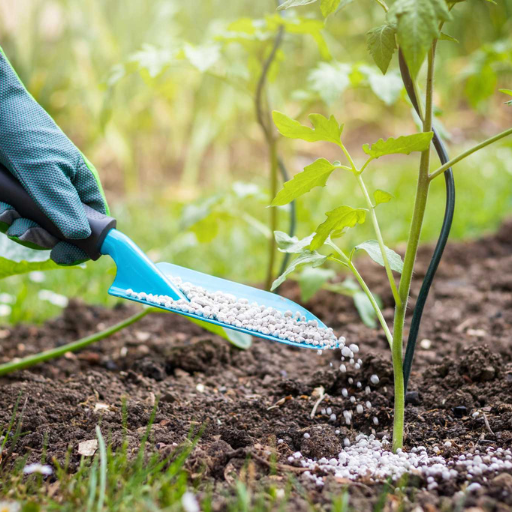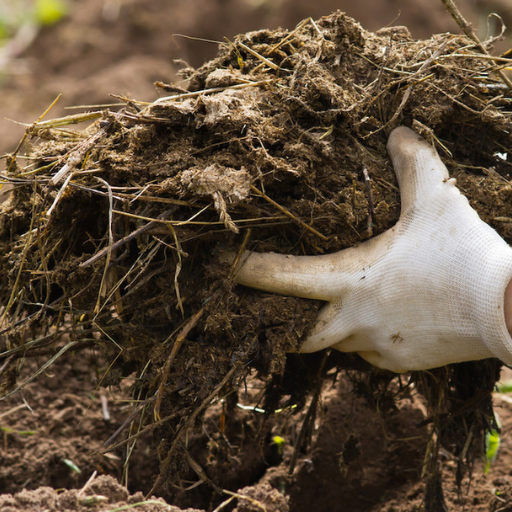Gardening enthusiasts are always on the lookout for ways to boost the health and yield of their plants. One crucial factor in achieving a thriving garden is the use of the right type of fertilizer. In this blog, we will explore the benefits and applications of organic high phosphorus fertilizer. Phosphorus is an essential nutrient that plays a significant role in root development, flowering, and fruiting. By understanding how to correctly incorporate organic high phosphorus fertilizer into your gardening routine, you can enhance the vitality and productivity of your plants without relying on synthetic chemicals. Whether you are a seasoned gardener or a novice, this guide will provide you with practical tips and insights to make the most of organic high phosphorus fertilizer in your garden.
What is High Phosphorus Fertilizer and Why Use It?

Understanding Phosphorus in Plant Growth
Phosphorus is one of the crucial macronutrients that are significant for the well-being of plants. It has many functions including energy production, photosynthesis, and nutrient flux within plants. Root development is critically dependent on it as it facilitates root systems with greater strength and coverage which in turn facilitate the plant’s ability to take up water and nutrients. Moreover, phosphorus ensures that plants can bear flowers and fruits, thus ensuring good harvests. Using high phosphorous fertilizers helps to improve overall plant health thereby resulting into more robust growth and higher yields.
The Benefits of High Phosphorus Fertilizer
The advantages derived from using high phosphorous fertilizer are numerous and they help improve plant health significantly leading to increased productivity. Primarily, it stimulates the development of strong roots. This enables them to absorb water as well as other important elements from soil hence making them generally healthier and more resistant to diseases. Secondly, it accelerates flowering and fruiting growth stages in plants. When phosphorous levels are held constant at a higher level than normal flowers form much better with a lot bigger fruits or seeds produced resulting into more abundant produce with superior quality products. Furthermore, energy transfer within plants also results from phosphorus being available in abundance which is essential for activities such as nutrient movement and photosynthesis among others within the plant system thus making such crops healthier thereby able to tolerate various environmental conditions during cultivation. A gardener may therefore use large amounts of highly concentrated phosphate manure to keep his/her garden blossoming with vibrant flora full of produce.
Comparing Phosphorus Fertilizer to Other Nutrients
When comparing phosphoric fertilizer with other essential nutrients such as nitrogen or potassium, it is necessary to understand how each nutrient operates differently for proper management of crop health.
- Nitrogen (N): This element is crucial for vegetative growth; therefore its presence promotes leafy growth while its absence retards the same. Moreover, it is important in the synthesis of amino acids, proteins and chlorophylls. One form of nitrogen deficiency can be seen as yellowing leaves or stunted growth. For example, optimal amount of nitrogen to be found in plant tissue normally range between 1-5% depending on plant species.
- Phosphorus (P): This element was mentioned above as it is essential for root development, energy conversion and flowering. Inadequate amounts can also cause dark green or purple foliage, poor root systems and little fruit production. The usual range of phosphorus content in plants lies between 0.1 and 0.4 percent.
- Potassium (K): It is associated with water balance in cells as well as enzymes activation and disease resistance mechanism in plants. It makes the plant stronger thus improving its ability to resist drought conditions, cold waves during winter season and diseases attacks from pests such as fungi among others.K-deficient plants may have brown scorching along leaf edges resulting from excess water loss that could have been otherwise controlled by potassium ions.K levels are generally higher ranging from 1-3%.
Technical Parameters:
- Nitrogen Fertilizers (e.g., Urea, Ammonium Nitrate): Expressed mostly as a percentage of the nitrogen compound contained; for instance urea has 46-0-0.
- Phosphorus Fertilizers (e.g., Superphosphate, Triple Superphosphate): Expressed mainly as their phosphorous components; for instance single superphosphate has a composition of 0-20-0.
- Potassium Fertilizers (e.g., Potash, Potassium Sulfate): Contain varying concentrations of potassium such as muriate of potash which is represented by zero-zero-sixty being an example given here.
Understanding the specific roles and optimum levels for nutrients enable both gardeners and farmers to develop balanced fertilization plans for their crops that will be healthy and productive.
What Are the Best Organic High Phosphorus Fertilizers?
Phosphorus Source Using Bone Meal
Bone meal, as a highly effective organic fertilizer, is an excellent source of phosphorus. It is typically produced from crushed animal bones, which are full of essential nutrients and can greatly improve root development, flower production, and overall plant vigor. In general bone meal contains high levels of phosphorus with values ranging between 12 – 16% on average; it also contains little nitrogen and calcium. To avoid over-fertilization, appropriate application rates should be used for bone meal up to about 2-3 pounds per100 square feet of soil.
Mixing bone meal into the soil in the root zone of plants at planting time for new plants or as a top dressing for established gardens is one way to use it effectively. On top of that, this slow release nature makes the bone meal break down slowly thereby releasing much phosphorous over an extended period. Another positive aspect associated with bone meal is its eco-friendliness since it recycles animal bones that could have been wasted hence promoting sustainability.
Rock Phosphate’s Role in Soil
Rock phosphate occurs naturally and serves as a significant source of phosphorus for plants. It is mined from clay deposits containing phosphorite (phosphorus). Rock phosphate works by slowly releasing phosphorus into the soil where plants can take it up gradually overtime when applied to soil. Thus it becomes an effective tool for long term fertility management especially in organic farming.
Unlike some synthetic fertilizers which leach away fast, rock phosphate has low solubility hence making it suitable in farming techniques where fertilizers require reapplication regularly; therefore this characteristic makes it more efficient compared to other substances used by farmers to keep their soils fertile. Apart from that rock-phosphate consists of vital minerals such as calcium together with trace elements which contributes further towards good health and growth rates among crops.
However, bear in mind that the efficiency of rock phosphate can be affected by pH and microbial activity in the soil. It is most effective in slightly acidic soils where phosphorus becomes more available to plants. Gardeners often improve on its efficiency by mixing it with compost or adding other organic materials that will increase microbial activity and can help release more phosphorous.
Overall, rock phosphate provides a sustainable and long term option for refilling soil’s phosphorus levels, strengthening root growth, flowering and fruiting in numerous crops.
The Effect of Manure on Phosphorus Levels
Manure is a valuable organic resource hence it contributes immensely towards the levels of soil phosphorous. When manure decomposes, it gradually releases phosphorous into the soil which plants take up for different physiological as well as developmental activities. The nutrient content of manure may vary depending on the type animal involved, diet eaten by these animals or how this manure is managed because both organic and inorganic compounds are available in their nutrients.
Adding manure to soils is advantageous due to enhanced soil structure, increased availability of P through improved microbial activities which controls such processes. Additionally, manures release extra nutrients e.g. nitrogen and potassium that aid plant growth generally. By integrating use of this manure element into farming systems soils fertility can be built over time; farmers could also reduce dependence on synthetic fertilizers while at the same time promoting sustainability within agriculture; however care must be taken when applying such fertilizers so that there will not be nutrient runoffs into water bodies leading to pollution.
Manure, in summary, serves as an efficient and environmentally friendly way to increase soil levels of phosphorus thus creating a conducive atmosphere for farming.
How to Apply Organic High Phosphorus Fertilizer?

Examination of Phosphorus Deficiency in Plants
Phosphorus deficiency has several manifestations in plants. Normally, the first signal is a discernible darkening of foliage where leaves may become bluish green. The plants might have retarded growth and reduced root development due to phosphorus scarcity which impairs their ability to effectively absorb water and other nutrients necessary for life. Younger leaves, especially on the underside, can be tinged with red or purple coloration as a result of anthocyanin accumulation.
Another symptom of phosphorus deficiency is poor flowering and fruiting since it has a very important role in energy transfer and reproductive processes. In severe cases, necrotic spots may start appearing on the old leaves before they eventually die off completely.
For an accurate diagnosis however, soil testing can be used to determine available levels of phosphorous in the soil. This would enable selective use of fertilizer which is aimed at handling such deficiencies without exceeding recommended quantities that would lead to pollution. Therefore proper balanced fertilization practices while adding organic manure or bone meal help in maintaining appropriate amount of phophorus levels hence healthy plants.
Methods for Adding Phosphorous to Soil
Several methods are effective for adding phosphorous to soils so that optimum plant growth and development can be ensured:
- Organic Amendments: Applying organic sources of phosphate like compost, farmyard manure or bonemeal will gradually raise soil phosphate levels. These materials are also useful in enhancing soil structure as well as microbial activity.
- Phosphorus-Rich Fertilizers: Purchase high-phosphate commercial fertilizers such as triple superphosphate or monoammonium phosphate if you want a more immediate boost in your phosphorous supply. Overfertilization must be avoided by using these guidelines; otherwise serious environmental problems could occur.
- Soil pH Adjustment: For example, adjusting pH lets farmers ensure that there are enough available amounts of phosphorous within the area for uptake by plants. To improve phosphorous availability, lime can be added to acidic soils or sulfur to alkaline ones.
- Foliar Feeding: Phosphorus-deprived plants in the most severe of cases could be treated directly with a foliar application which would provide an immediate solution thus allowing for faster nutrient absorption by the plant.
- Mycorrhizal Inoculation: Mycorrhizal fungi can increase root surface area hence enhance phosphorous absorption into the plant. This type of mutualistic association between these fungi and plant roots improves nutrient acquisition efficiency.
Employing these techniques will enable gardeners and farmers to address phosphorus deficiency leading to better yield and healthier crops.
Facilitating Efficient Uptake of Phosphorus by Plants
Efficient uptake of phosphorus by plants involves a combination of factors. For example, according to the top sources it is important to:
- Conduct Soil Tests: Periodic soil tests conducted help determine the existing concentration of available phosphate as well as soil pH. This is vital information for developing a targeted P management plan.
- Use Phosphoric Fertilizers Properly: Apply triple superphosphate or monoammonium phosphate following manufacturer’s instructions. Overuse can cause pollution through runoffs.
- Optimize Soil pH: A pH level maintained between 6-7 maximizes the amount of phosphate available in the soil. The addition of limestone corrects acid soils while sulphur is effective in doing away with alkalinity from soils respectively.
- Incorporate Organic Matter: Manure and compost add organic matter that improves soil structure, microbial activities, and release phosphorous gradually.
- Utilize Mycorrhizal Fungi: These types form associations with plant roots that enlarge root areas enabling more phosphorous intake by them.
Such steps could lead gardeners and farmers towards promising results since they stimulate improved utilization depending on each specific case and thus strong growth along with increased productivity may follow under proper conditions.
When to Use High Phosphorus Fertilizer?

Phosphorus Application Time (Garden Fertilizers)
There are certain stages in plant development where phosphorus application is most effective and specific seasonal conditions. According to the following sources:
- Time of planting or sowing: Young plants need substantial amounts of P during this period to establish strong root systems, it is therefore important that phosphorus fertilizers are applied at planting or seeding time. This ensures availability of phosphorus enough for early growth stages.
- Early spring or fall: Phosphorus fertilizer can be applied early spring as soil temperatures are cooler and microbial activities higher enhancing nutrient absorption. Also, applying it in the fall will allow the nutrient to be available for use by plants during the next growing season.
- Pre-bloom stage:For flowering plants, applying phosphorus before blooming stage helps promote robust flower and fruit development. It is also a critical phase when plants require additional nutrients for support of reproductive growth.
By adhering to these timing recommendations, gardeners and farmers can maximize phosphorus absorption and enhance overall plant health and productivity.
Soil pH Influence On Phosphorous Availability
The PH value of soil is what determines how much access a crop will have to P nutrients that may be present in its environment. The optimum range for P availability from soils is usually indicated as 6.0-7.5. Beyond this pH range, phosphate ions precipitate out leading into insoluble forms; hence they cannot then be taken up by roots of the plants anymore. In acid pH soils which have less than 6pH values P tends to become adsorbed by iron plus aluminum thus rendering it unavailable. Contrariwise, in alkaline soil whose values go beyond 7.5P binds with calcium limiting its uptake through roots by a plant. Maintaining a balanced soil pH through proper management practices can optimize phosphorus availability, ensuring that plants receive the essential nutrients they need for healthy growth and development.
Bloom and fruit development Phosphorus Requirement
Phosphorous is a major nutrient and it plays critical roles in determining plant flowering and fruiting stages. Sufficient levels of phosphorous are required to develop strong root systems that provide an ideal platform for optimum water and nutrient uptake. Pre-bloom and bloom periods witness the highest bud formation, which is supported by enhanced energy transfer across the whole plant system. The flower or fruit in this condition will be full of energy, healthy, robust with intense coloration. On the other hand, inadequate amounts of P in these plants would cause weak flower buds as well as fruits thus interfering with maturity or quality during harvest. Therefore, to ensure that blooms are vibrant and fruits are plentiful it is important to use phosphorus rich fertilizer or amend soil accordingly at early stage of plant growth. This will enable the reproductive processes of the plant to proceed successfully leading to harvesting success.
What Are the Drawbacks of High Phosphorus Fertilizers?

Potential problems of phosphorus overuse
Several major concerns come to mind when I think about the potential issues with phosphorus overuse. Soil nutrient imbalances, resulting from excessive phosphorous may reduce the availability of other essential elements such as zinc and iron that plants require for healthy growth. Also, overusing phosphorus fertilizers may lead to their runoff into adjacent water bodies causing algal blooms and eutrophication. Consequently, these environmental issues deplete oxygen levels in water systems; hence cause havoc for aquatic organisms and ecosystems. Moreover, an unselective use of high phosphate fertilizers result in cases where the element accumulates in the soil leading to decreased soil structure and fertility ultimately. Henceforth it is important that one must handle carefully his/her level of phosphorous through soil tests so as not to have adverse effects as stated.
Environmental Impacts of Excess Phosphorus
When I dig deep into the matter of what happens in case there is excess use of phosphorous, I can see that this problem mainly concerns deterioration in water quality .This process usually involves the leaching or runoff from agricultural fields or application of excess fertilizer through which much phosphorous find its way into rivers, lakes or coastal waters consequently resulting in excessive growth of algae .In this regard ,eutrophication goes on until harmful algal blooms develop whereby there are no longer enough oxygen levels within water system thus resulting “dead zones”in which no aquatic creature can live .Moreover ,these bloom can release toxins dangerous to both marine life forms and human being. Another issue worth discussing is that wetlands are destroyed and aquatic ecosystems altered interrupting ecological balance and diversity …Therefore, good governance approaches towards P-based fertilizer will help avoid such negative environmental consequences.
Balancing Phosphorus with Other Nutrients
Maintaining soil health demands a balance between phosphorus and other nutrients for optimum plant development. From my research findings, striking this balance requires understanding individual plant requirements and soil nutrient analysis. Soil testing, however, is the first step since it tells me about the current levels of phosphorous and other nutrients so that I can adapt my fertilizing practices accordingly. It may also be beneficial to add some organic matter such as compost which will augment nutrient availability in the soil including its physical properties. Additionally, crop rotation and cover cropping techniques can help reduce dependence on synthetic fertilizers while enhancing natural replenishment of nutrients. This way, a balanced nutrient profile for sustainable agriculture is achieved with minimal environmental consequences.
Frequently Asked Questions (FAQs)

Q: What is organic high phosphorus fertilizer?
A: Organic high phosphorus fertilizer is a plant food that contains high levels of the chemical element phosphorous which is important for root growth and plants’ health in general. These kinds of fertilizers are made from natural sources including fish emulsion, guano, bone meal, animal manure compost and many more.
Q: Why does my garden need phosphorus?
A: One of the crucial elements that plants require for proper functioning such as blooming and root development is Phosphorus. It helps in converting other main nutrients into forms which can be used to build plants. The soil having low levels of phosphorus can result in weak roots and feeble structures for a given plant.
Q: How do I know if my garden is deficient in phosphorus?
A: Signs that your garden may lack enough Phosphorous include poor flowering or fruiting, dark bluish-green leaves, and stunted growth. Testing your soil’s nutrient levels can also reveal a phosphorus deficiency.
Q: Can animal manure be used as a source of organic phosphorus?
A: Yeah, animal manure like horse dung seems quite ideal as an organic phosphorous source since it has slow release properties which allow long term nutrient supply.
Q: What is the best npk ratio for an organic high phosphorus fertilizer?
A: A well-balanced npk ratio for a high-phosphorous fertilizer would usually have higher middle number like 4-10-3. This means that it has more amount of nitrogen compared to potassium and higher amounts than others.
Q: How do I use fish emulsion as an organic phosphorus fertilizer?
A: Fish emulsion is liquid manure that comes from different parts of fishes, containing large quantities of phosphate-rich compounds among other vital nutrients. It can be mixed with water or sprayed on leaves directly onto the soil to give them an instant healthy look.






